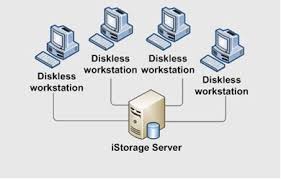Microsoft Starts Over in Phone Software

Microsoft, Intel and Nokia — all leaders in their respective markets — have struggled to capitalize on the rise of a new class of smartphones that can tap into a vast pool of software. So these companies have come to the world’s largest mobile technology conference here with a message of change. They’re willing to abandon tradition if it means getting another shot at the fast-growing mobile device market and blunting the advance of companies like Apple and Google.
On Monday at the Mobile World Congress, Microsoft unveiled a new version of its flagship smartphone software, which was called Windows Mobile but has now been dubbed Windows Phone.
Steve A. Ballmer, Microsoft’s chief executive, took the stage for a few minutes before a demonstration of the new software began.
“We debated a lot about how much we should position and talk about from whence we have come and what we will show you,” Mr. Ballmer said. “At the end of the day, we said, ‘Let’s get on with the show.’”
Windows Phone 7 Series has a cleaner look than most of today’s phone software, with bright blue icons on a black background. One version of the initial screen has four large, square icons for Phone, People, E-Mail and Text functions that Microsoft calls Live Tiles.
Underneath, a rectangular box pulls in calendar information. And below that Microsoft is highlighting its Zune music and video software and its Xbox Live gaming service.
Overall, Microsoft has blended trimmed-down menus with slick applications like an animated calendar.
The product marks a rare moment when Microsoft scrapped previous versions of its software in favor of building something new from scratch. Microsoft has spent the past 18 months trying to add gloss and sophistication to a product that had suffered ridicule as being clunky and too wedded to the company’s personal computer roots.
“We think there is a really big opportunity for a fresh start,” said Todd Peters, the vice president at Microsoft in charge of mobile product marketing. “Consumers have an amazing capacity for retrying things.”
Intel and Nokia too have opted for a fresh start. The companies have decided to create a new software platform called MeeGo that they hope will make its way into cars, home phones, smartphones and computers.
At its core, MeeGo stands as a broad attempt to outflank mobile phone software from Google, Apple and Microsoft by creating a product that can bring a similar interface to a wider range of computing devices.
“The next evolution of mobile computing, which is way beyond smartphones, tablets and netbooks, will require a truly open platform,” said Kai Öistämö, Nokia’s head of devices.
Historically, Microsoft and Intel have dominated the computing industry hand-in-hand, with Microsoft producing the most-used software and Intel building the most popular chips. But this Wintel duopoly, as it’s sometimes called, has failed to carry over to the mobile world.
Instead, Microsoft finds itself taking yet another crack at building phone software and trying to play the role of the innovator rather than an also-ran mimicking Apple and Google.
For its part, Intel has been forced into the software game so that it can ensure that enough solid applications exist for the company’s Atom chips, which sit in laptops today but have yet to make their way into mobile phones.
So different is this new world order that Microsoft has thus far refused to offer a version of its mobile operating system for the Atom chips, focusing instead on building software for rival ARM chips.
Nokia emerged as a natural partner for Intel given the company’s recent struggles in the smartphone arena.
While its leads in overall smartphone market share, Nokia has watched interest in Apple’s iPhone and phones based on Google’s Android software skyrocket. The iPhone, in particular, also opened up the market for mobile applications through Apple’s App Store, which has served up more than 3 billion software downloads.
Intel and Nokia look to team on attracting software developers to MeeGo, and Intel has even backed the idea of running MeeGo on rival chips if it helps the software gain broader interest.
Analysts contend that the mobile market remains in a state of flux, leaving plenty of room for these companies to build momentum if they can create something that catches the consumers’ eye.
Microsoft has intended to do just that by reorganizing its mobile division and presenting people a phone interface quite unlike anything else on the market.
More than two years ago, Microsoft started plucking top executives away from companies in a wide variety of industries, hoping they could revitalize its mobile software group. Mr. Peters brought some marketing muscle over from Staples, where he helped to create the popular “Easy Button” campaign.
Other executives arrived from Procter & Gamble and Nike, as Microsoft sought to find a new way of talking to consumers, since about 86 percent of phones running Windows are sold through retail outlets.
While studies show that consumers tend to react favorably to the Windows brand, they’ve been less enamored with the way Microsoft’s phone software works.
“We need to have a degree of humility as we go about our business,” Mr. Peters said. “It has been painful, but it’s getting better.”
Microsoft has also pulled some of its top engineers from other divisions over to the phone group, hoping the workers could provide inspiration and structure around the processes needed to make a polished product on time.

Comments
Post a Comment